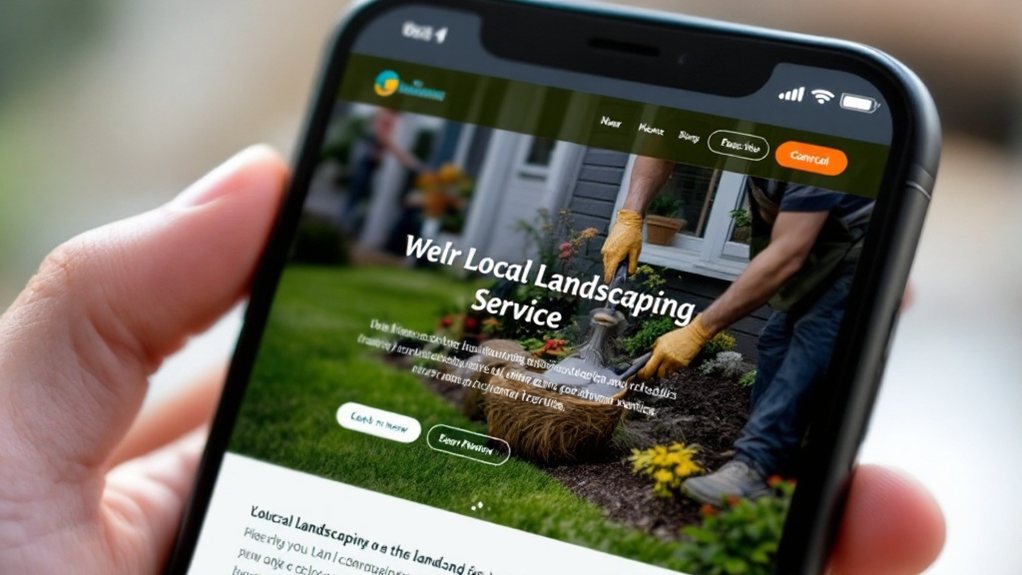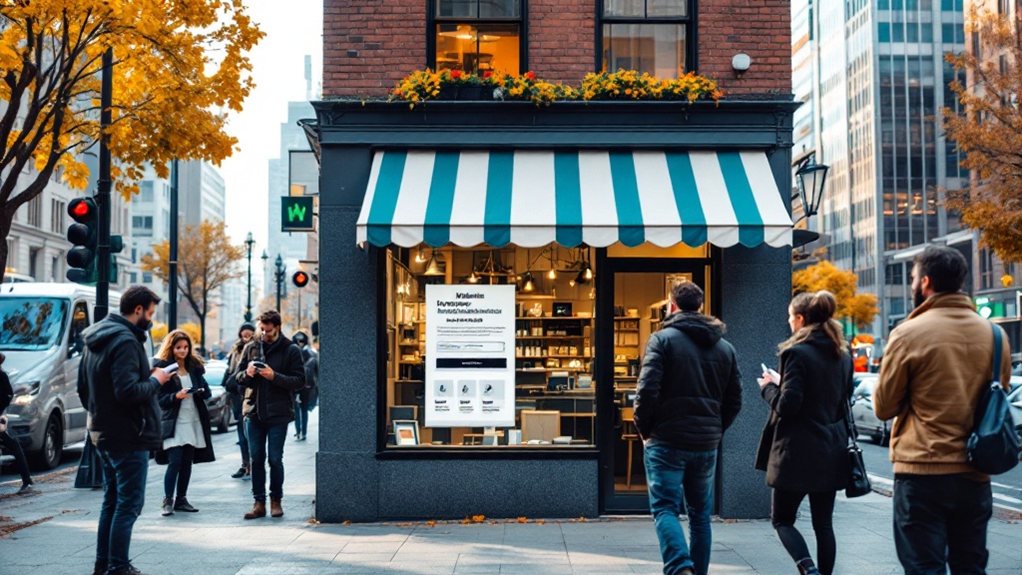As a local service provider, you know your website needs to be mobile-friendly to captivate your audience and drive conversions. Optimize your layout and content to adapt seamlessly across devices. Enhance the user experience with intuitive navigation and mobile-friendly forms. Improve engagement through personalized content and social integration. Focus on local-friendly calls-to-action that streamline the conversion process. By prioritizing adaptability, you'll reach more customers and increase satisfaction. There's more to explore on designing an effective mobile-friendly website for your local business.
Key Takeaways
- Optimize website layout and content to adapt seamlessly across smartphones, tablets, and desktops, ensuring a consistent user experience.
- Leverage responsive web design techniques, including flexible grids and fluid images, to create a mobile-friendly website that adjusts to various screen sizes.
- Prioritize intuitive navigation, clear calls-to-action, and mobile-optimized forms and checkouts to enhance the overall user experience.
- Incorporate features like click-to-call and geolocation to personalize the experience and cater to the needs of local service seekers.
- Analyze customer data and feedback to continuously improve the website's mobile responsiveness and drive increased conversions for local service providers.
Optimizing for Mobile Responsiveness

As you design your mobile-friendly website, optimizing for mobile responsiveness is crucial. Ensure your website's layout and content adapt seamlessly to various screen sizes and devices. Employ responsive web design techniques, such as flexible grids, fluid images, and media queries, to create a cohesive user experience. Optimize page load times by compressing assets, minimizing redirects, and leveraging browser caching. Prioritize mobile-friendly typography, intuitive navigation, and prominent call-to-action buttons. Test your website across different devices and browsers to identify and address any rendering issues. By prioritizing mobile responsiveness, you'll provide your local service customers with a convenient and accessible online presence, enhancing their overall satisfaction and engagement.
Enhancing User Experience
Beyond mobile responsiveness, you must also focus on enhancing the user experience (UX) of your mobile-friendly website. Prioritize intuitive navigation, clear calls-to-action, and lightning-fast load times. Optimize forms and checkouts for small screens, and ensure seamless cross-device compatibility. Leverage user feedback to continuously improve the UX, addressing pain points and streamlining the customer journey. Incorporate features like click-to-call, geolocation, and mobile-specific content to deliver personalized, on-the-go experiences. Ultimately, a delightful UX will keep your local service customers engaged, foster trust, and drive conversions, positioning your business for long-term success in the mobile-first era.
Improving Customer Engagement

Engaging your local service customers doesn't stop at delivering a smooth mobile experience. You must also focus on improving customer engagement. Encourage reviews and testimonials to build trust. Leverage chatbots and live chat to provide instant support. Personalize content and offers based on user behavior. Integrate your website with social media to increase visibility and engagement. Analyze customer data to understand their needs and preferences better. Continuously optimizing your website and marketing strategies will keep your local service brand top-of-mind and drive customer loyalty. Prioritize engagement, and you'll see increased conversions, repeat business, and referrals.
Driving Conversions for Local Businesses
To drive conversions for your local business, you must optimize your website's calls-to-action (CTAs). Ensure your CTAs are prominently displayed, clear, and compelling. Encourage visitors to take specific actions, like booking an appointment or requesting a quote. Leverage action-oriented language, such as "Schedule Now" or "Get a Free Estimate." Additionally, test different CTA placements, colors, and wording to determine what resonates best with your audience. Integrate mobile-friendly forms and streamline the conversion process to minimize friction. By focusing on effective CTAs and a seamless mobile experience, you can turn website visitors into valuable customers for your local service business.
Adapting to Diverse Screen Sizes and Input Methods

When designing mobile-friendly websites for local service providers, you must consider the diverse screen sizes and input methods used by your target audience. Smartphones, tablets, and desktops all have different screen dimensions, which requires your website to adapt its layout and content accordingly. Additionally, users may interact with your site through touch screens, keyboards, or mice, necessitating intuitive navigation and user-friendly controls. Carefully optimizing your website for various devices and input methods will ensure a seamless experience, increasing the likelihood of conversions and customer satisfaction. By prioritizing adaptability, you can reach a broader audience and effectively showcase your local service offerings on the go.

